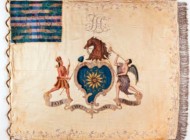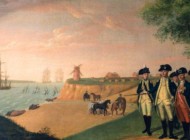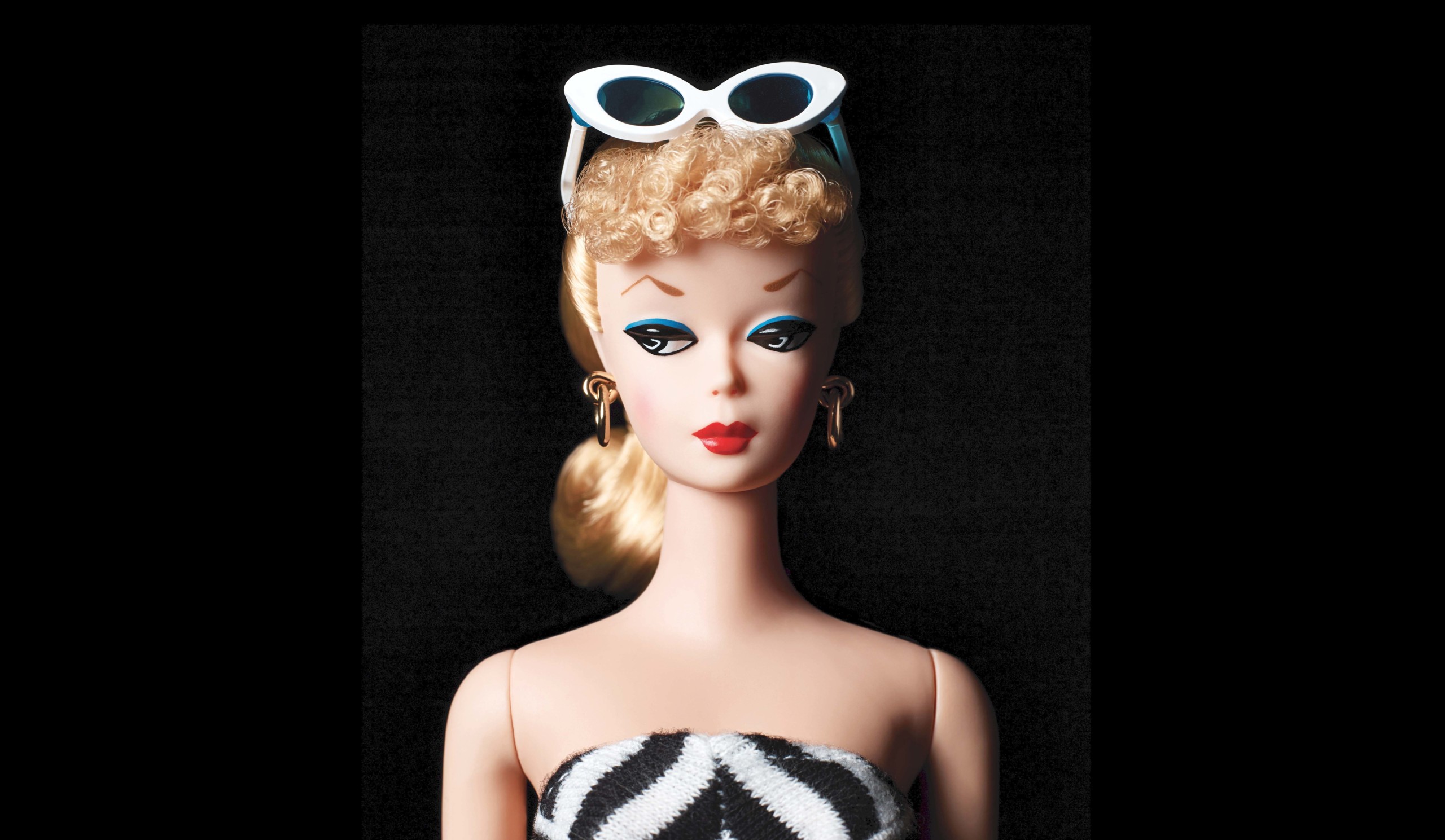
1959 Barbie No. 1 ©Mattel, Inc.
By Karla K. Albertson
LONDON — Barbie is a woman — a toy, of course — that everyone thinks they know. Perhaps they had (or still have) a childhood plaything from the 1970s, or gave a specific one at Christmas per a granddaughter’s request. And, since last year’s film version of her “real life,” directed by Greta Gerwig, she has taken on a vivid storyline that propelled her adventures with Ken and friends to the highest grossing film of the year.
But 2024 is her 65th Anniversary and — if you lined up a procession of Barbies of the past wearing their period fashions – you would see a myriad of changes in her body, hair, and clothing that reveal Barbie’s history as a story of design evolution. It is in this spirit the Design Museum in London is running “Barbie: The Exhibition” until February 23, 2025.
In the lead up to the opening, Tim Marlow, director and chief executive officer of the Design Museum said: “Design has been at the heart of Barbie’s story ever since her creation 65 years ago. And as we’ve seen recently, her impact has also evolved with each new generation. Visitors to our timely exhibition will come face-to-face with some of the most important and recognizable iterations of Barbie from across the past six-and-a-half decades, and we hope it will be a joyful, fascinating, inspiring, illuminating and even perhaps nostalgic experience for generations of Barbie fans.”
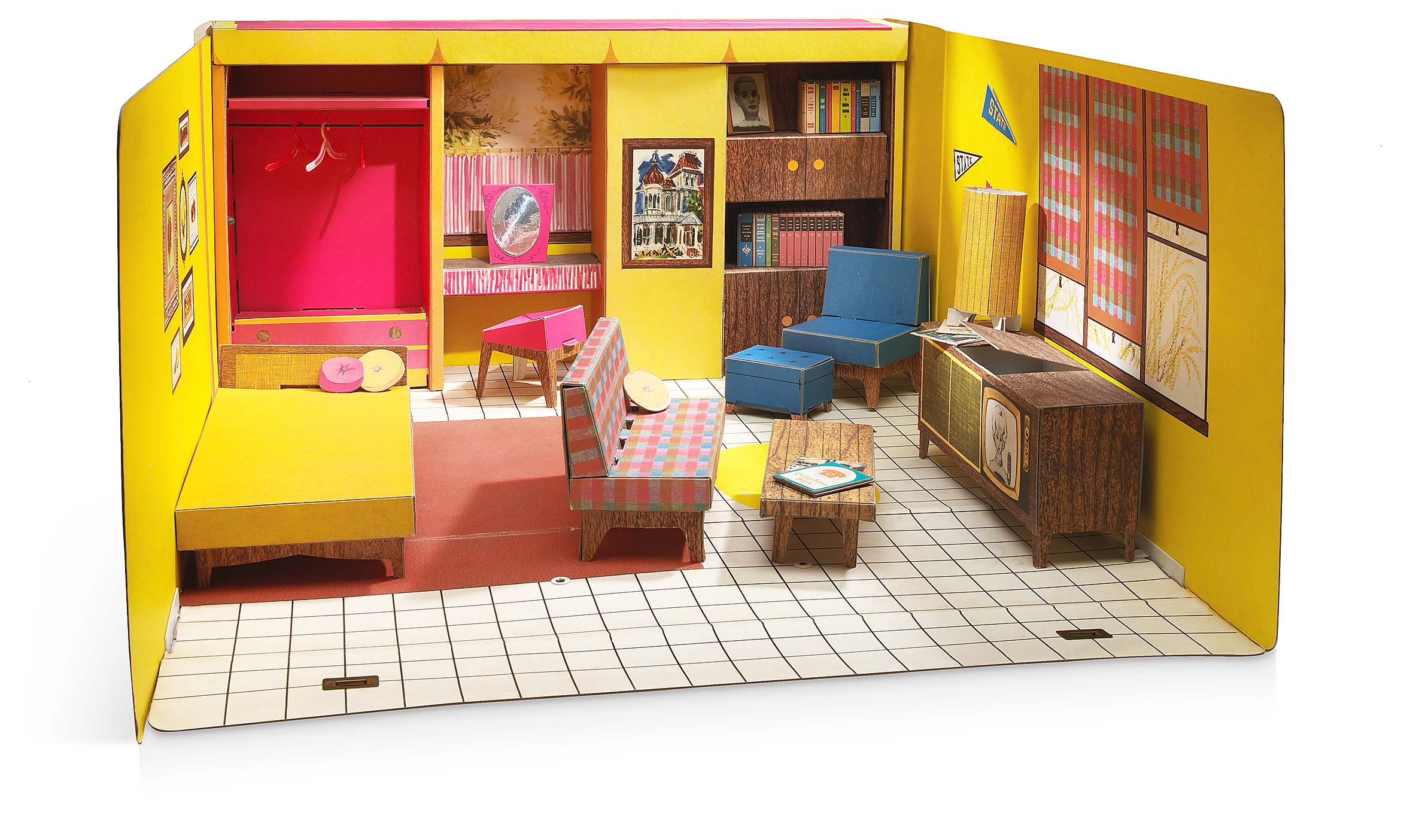
A 1962 Barbie Dream House. ©Mattel, Inc.
What’s in the show? The museum was able to draw on the Mattel archives in California so the galleries will display 250 objects, including 180 dolls. There will be houses, vehicles, friends and designer fashions. Pride of place will be the “No. 1” Barbie, the ultimate collectible from 1959, along with a showing of her first television commercial. Also included is the first Dream House, a modernist design from 1962, and her first car, also from that year. “Day to Night” Barbie of 1985 reflected new executive opportunities for women; she could wear a suit by day and still change into her evening gown after 5 pm.
The progression of Barbie’s design from the time it was first introduced by businesswoman Ruth Handler, who named the grown-up figured plaything after her daughter Barbara, has been staggering. Not only clothing shifts but changes in her hair, face, body dimensions and articulation. The original sidelong gaze, for example, became a wide-eyed straight forward glance. And that impossibly narrow waist became — a bit — more realistic.
Antiques and The Arts Weekly asked exhibition curator Danielle Thom what was the inspiration for the show? Was it the film?
“The planning of the exhibition actually predated the release of the movie. It was coincidental, fortuitous timing. The rationale behind this exhibition — and the reason for us doing it here specifically at the Design Museum — is because this is the anniversary: 65 years of Barbie.
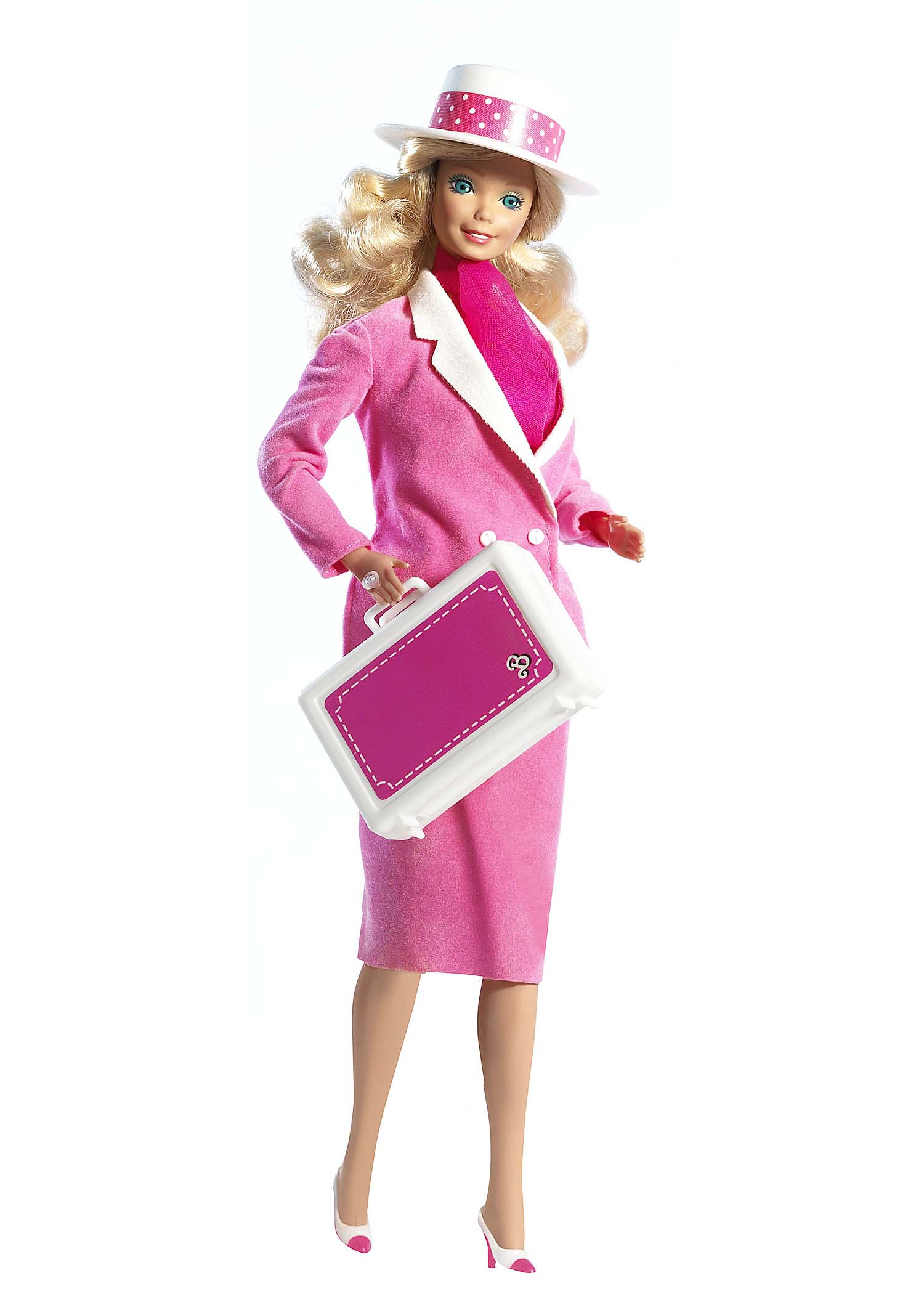
A 1985 Day to Night Barbie. ©Mattel, Inc.
“What we wanted to do is look at why Barbie — both as a doll and a brand has such longevity — cultural staying power, if you like. And examine the role of design, specifically, in securing that longevity. Of course, very, very few toys have the kind of cultural presence that Barbie does. The only other toy brand that has been around consistently as long as she has is Lego.
“Most toys have a life of a few years or a decade, if they’re lucky. Barbie persists, and the answer to why that is the case is rooted in design. The fact that the doll and her world — the dream house, the fashions, the cars — are all rooted in the design of our own world.”
To investigate, Thom went to the Mattel archives in California in 2023. “That was a very valuable visit because it allowed me to look — not only at a number of historic and hard-to-find Barbie dolls — but also at a lot of the design materials: the sketches, the notebooks, the dress patterns across the decades that went into the making of Barbie. And I was lucky enough to receive a tour of the Mattel design facility and meet the present day designers who work bringing the doll to life in her modern incarnation. That was a really important and insightful visit for understanding how the doll that we see in a box on a shelf actually comes into being, from an idea into a finished product.”
Turning to the subject of changes wrought on Barbie over the years, she noted, “One of the things I think is particularly interesting relates to Barbie’s hair.
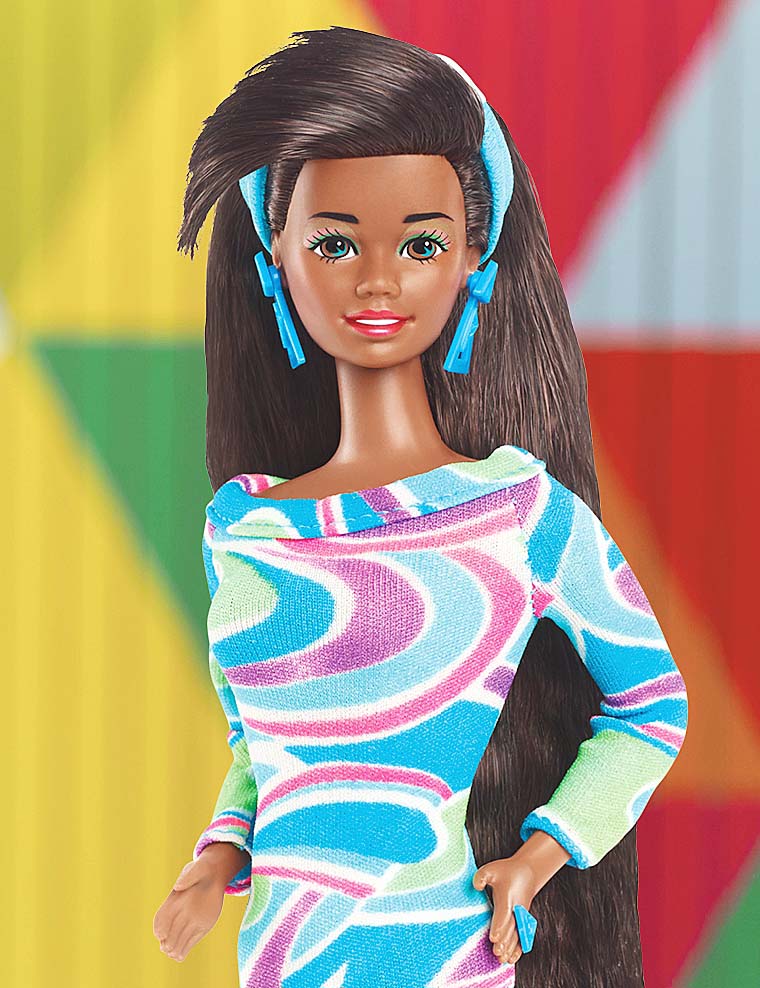
1992 Totally Hair Barbie. ©Mattel, Inc.
In the first decades, you could buy a Barbie doll in a variety of hair colors — blonde, light brown, dark brown, Titian red, various shades. Then, there is a shift in the 1970s that the light skinned Barbie would always be blond, and now the pendulum has swung back the other way, and there is a much greater variation in appearances.
“From the mid-70s to the late 1990s, Barbie’s aesthetic becomes very pink, very romantic, opulent almost, oriented toward ball gowns and princess dresses — just divorced from fashion reality. For a while it’s very fantasy driven, while more recently hair and clothing styles are more rooted in what people actually wear. Obviously, it’s an aspirational version of what people wear, but it bears a relationship to the clothes young women might be wearing out and about.”
Barbie has acquired outfits for playing every sport and performing every job, from surgeon to astronaut. And through the decades there have been great strides in diversity and multiculturalism. The curator pointed out: “The first black doll to bear the name of Barbie was released in 1980 — and she was a watershed for the brand and the idea of what Barbie could be and could stand for. We address that in the exhibition.”
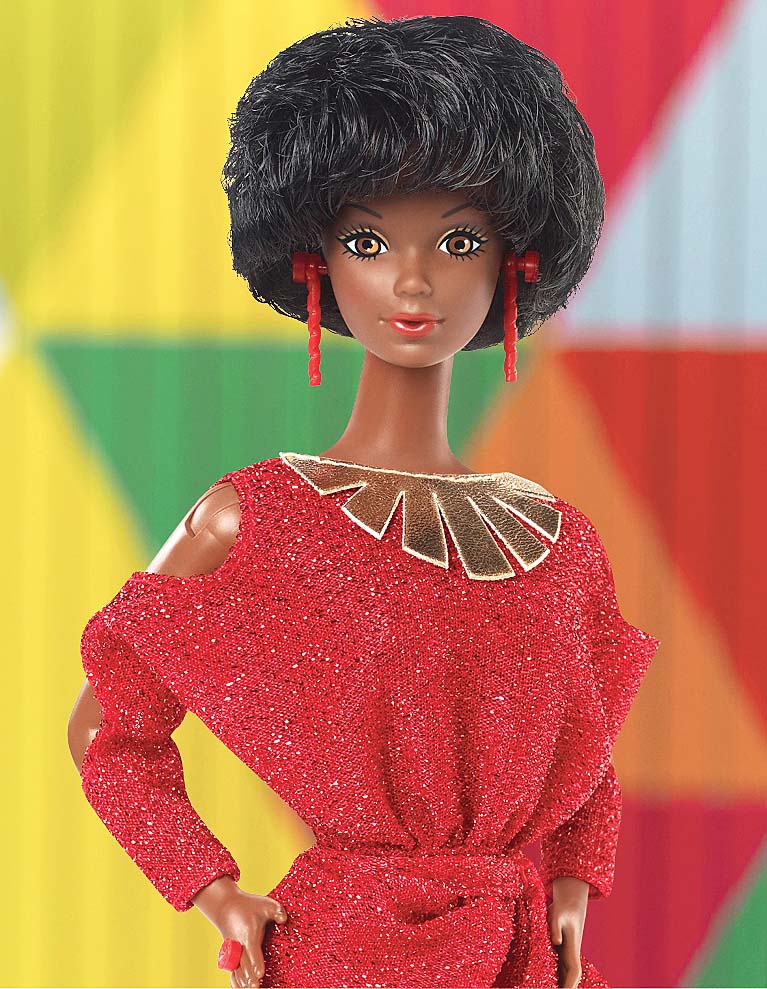
1980 Black Barbie. ©Mattel, Inc.
When the main doll settled on one hair and skin color, the Barbie family has been expanded to include people from every background and even disabilities. A quick search online will reveal the extent of the offerings.
As moviegoers surely noted, there have always been friends around Barbie. “The various characters — the friends, the family — they kind of cycle in and out over the years,” explained the curator. “Midge, Barbie’s very first friend — introduced in the 1960s, was out of circulation for a while, then she’s reintroduced in the early 1980s. Some have a very brief shelf life like the Christie character — it’s interesting to see how that cast of characters shifts over time.”
Thom said in conclusion, “I anticipate that there will be a broad variety of visitors to the show. There will, of course, be people who will come because they love Barbie and have never visited the Design Museum before. I hope they will come away having an enjoyable and nostalgic experience but also understanding the importance of design as a discipline on how Barbie came into being.
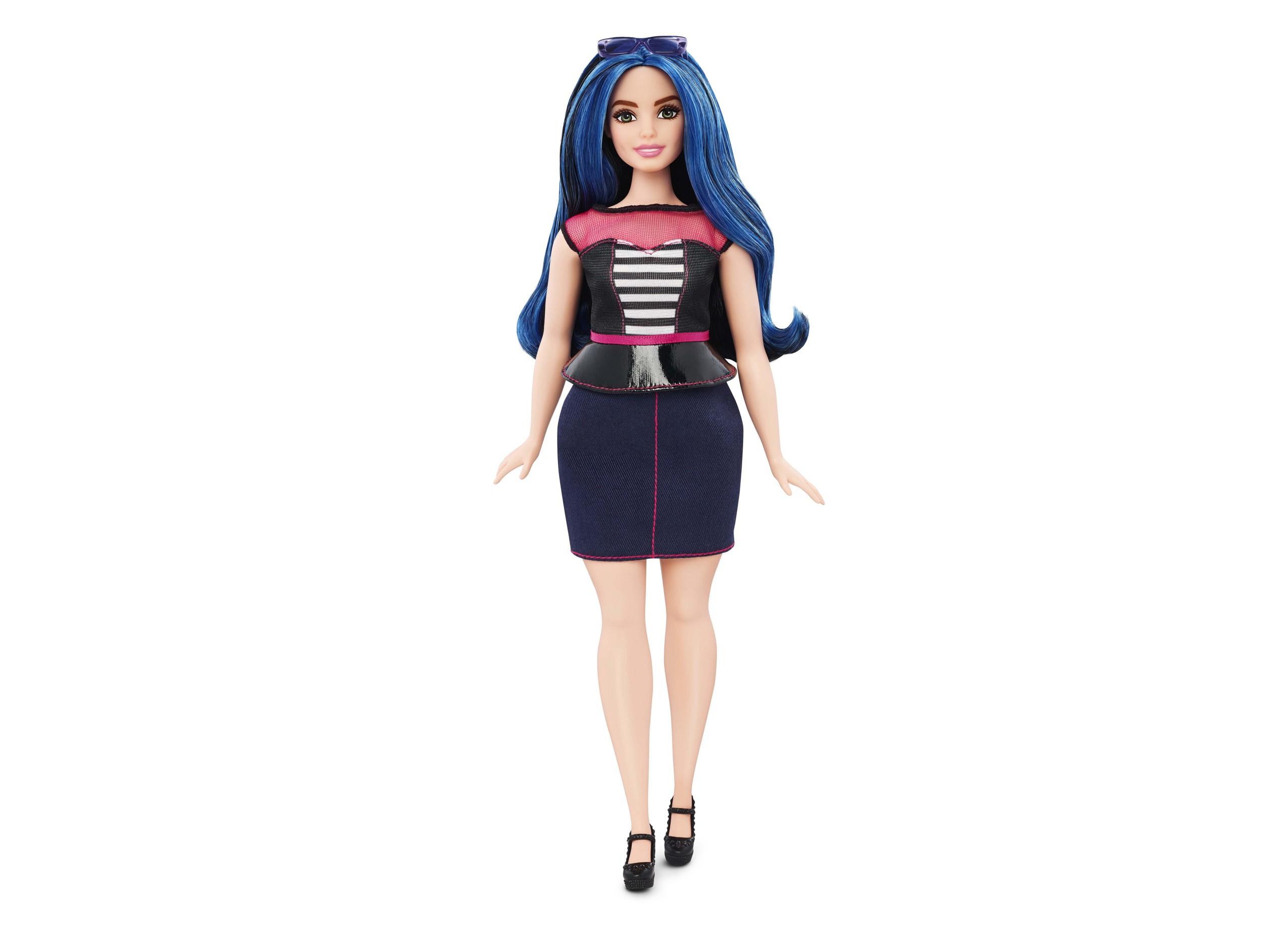
Barbie Fashionista #27 Sweetheart Stripes. ©Mattel, Inc.
“We will also have visitors coming who are interested in design but perhaps have little prior knowledge of Barbie. For people on that side of the equation, I hope they will come away realizing that while Barbie was a toy aimed at women and children through which they were able to control their own miniature world, that does not prevent Barbie from being taken seriously as a design object.
“I had a lot of fun putting this exhibition together, getting to — I won’t say ‘play’ with the dolls, but handle them in a professional manner. Regardless of the reason somebody may visit this exhibition, whether they have prior knowledge of Barbie or not, I hope they come away feeling pleasantly surprised by what they’ve learned.”
While waiting to book that flight to London this summer, take a look at the “Barbie” episode on the delightful Netflix series The Toys that Made Us, which also charts the story of her design and designers.
The Design Museum, in a striking building at 224-238 Kensington High Street, has a kitchen and café and can be accessed easily. For more information, www.designmuseum.org.













